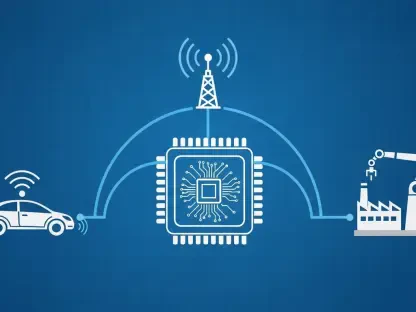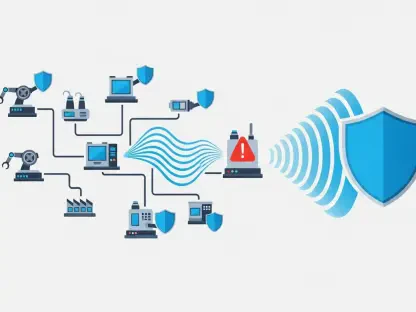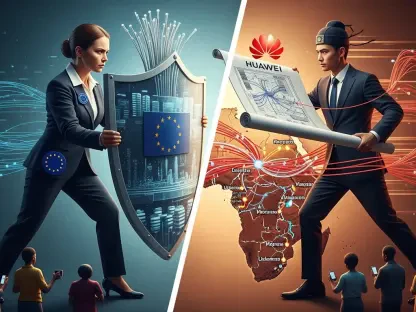I’m thrilled to sit down with Vladislav Zaimov, a seasoned telecommunications specialist whose deep expertise in enterprise telecommunications and risk management of vulnerable networks offers a unique perspective on the future of mobile technology. With years of experience navigating the complexities of network advancements, Vladislav is perfectly positioned to shed light on the emerging world of 6G, even as 5G continues to evolve. In our conversation, we explore the strategic timing of 6G discussions, the push for seamless innovation, the importance of software-driven solutions over hardware overhauls, and the vision for a more open and standalone network architecture from the start. Let’s dive into his insights on how the industry is preparing for this next generational leap.
Can you explain why the industry is already focusing on 6G, even though 5G is still being deployed in many places?
Absolutely, Andrew. The timing for 6G discussions isn’t arbitrary—it’s driven by the standards development cycle. Organizations like 3GPP, which sets global mobile standards, have already begun laying the groundwork with initial talks and study items for 6G radio access and system architecture. If we wait until 5G is fully rolled out, we risk falling behind in shaping what 6G will become. Historically, each mobile generation takes about a decade from concept to deployment, with 6G expected around 2030. Starting now ensures we can influence the technology to meet future needs while building on 5G’s foundation. Plus, operators and vendors learned from past transitions that early collaboration avoids fragmented standards or rushed solutions.
How does this timing for 6G differ from previous generational shifts in mobile tech?
Unlike the earlier shifts—say, from 3G to 4G—where there was a clear alignment between standards cycles and operators’ investment timelines, 6G feels a bit out of sync. Back then, each decade brought major hardware leaps that justified new investments. Now, with 6G, many operators are still modernizing networks for 5G and want those investments to carry forward. The focus is less on a dramatic overhaul and more on incremental, software-driven upgrades. There’s also a pragmatic shift in mindset—after the overhyped promises of 5G, the industry is approaching 6G with a more realistic lens, prioritizing cost efficiency and practical innovation over flashy marketing.
What does the concept of ‘continuous innovation and disruption’ mean for the approach to 6G?
It’s about creating a fluid transition rather than a jarring break between generations. Continuous innovation means building 6G on top of 5G and 5G Advanced capabilities, introducing new features as they’re ready rather than waiting for a big bang deployment. Disruption, in this context, refers to challenging outdated deployment models—think avoiding massive hardware replacements by leveraging software. This approach ensures we’re always moving forward without alienating customers or straining budgets. It’s a way to keep the network evolving in real-time, aligning with business and user demands as they emerge.
How do you see software playing a role in avoiding major hardware overhauls for 6G?
Software is the game-changer here. With advancements in virtualization and cloud-based solutions, we can upgrade network capabilities through software updates rather than ripping out and replacing hardware at every cell site. For instance, using open radios that support multi-RAT spectrum sharing allows the same equipment to handle both 5G and 6G signals. Software-defined networking also lets us tweak performance, add features, or enhance security without touching the physical infrastructure. This not only cuts costs but also speeds up deployment, letting us focus resources on innovation rather than logistics.
Why is there such a strong emphasis on making 6G standalone from the very beginning?
Starting with a standalone setup for 6G is about learning from 5G’s rollout. 5G began with a non-standalone mode, relying on 4G infrastructure, which delayed full benefits like ultra-low latency and massive connectivity. A standalone 6G means the network operates independently from day one, delivering its promised performance without interim dependencies. For customers, this translates to faster access to cutting-edge services. For operators, it simplifies network management and reduces long-term costs by avoiding phased transitions. It’s about getting it right from the start.
Can you elaborate on why openness, especially in radio interfaces and APIs, is so critical for 6G?
Openness is key to flexibility and collaboration. An open radio interface, like in open RAN, allows multiple vendors to interoperate, breaking down the silos of proprietary systems. For 6G, this means faster innovation and lower costs since we’re not locked into one supplier’s ecosystem. Open APIs, on the other hand, enable developers and third parties to tap into network data from the core, creating new applications and services. Imagine real-time traffic management apps or IoT solutions that leverage network insights directly—this kind of ecosystem can only thrive with openness baked in from the outset.
How do you balance the need for new hardware or spectrum with the goal of keeping costs manageable for 6G?
It’s all about a needs-based approach. We assess hardware refreshes or new frequency bands based on specific business drivers—like capacity demands in dense urban areas or new use cases requiring unique spectrum. For example, if a region’s traffic spikes beyond what existing bands can handle, that justifies targeted upgrades. But we balance this by maximizing current investments, using software to optimize performance, and only deploying new resources where there’s a clear return. Cost control also comes from scalable designs that support a range of devices and needs without overbuilding infrastructure upfront.
What lessons from the 5G rollout are shaping the strategy for 6G deployment?
5G taught us a lot about managing expectations and execution. The initial hype promised transformative change overnight, but many operators struggled with incomplete functionality and delayed returns on investment. For 6G, we’re focusing on realistic timelines and clear communication about what’s possible. The phased non-standalone rollout of 5G also showed us the pitfalls of dependency on older tech—hence the push for standalone 6G. Additionally, 5G highlighted the importance of spectrum access and geopolitical challenges, so we’re advocating early for unified standards and sufficient bandwidth to avoid fragmentation or delays down the line.
What is your forecast for how 6G will impact everyday users and businesses by the time it’s widely deployed?
By around 2030, I expect 6G to redefine connectivity in ways 5G only hinted at. For everyday users, it’ll mean seamless, ubiquitous access—think instant downloads, immersive augmented reality experiences, and smart environments that adapt to your presence without lag. Businesses will benefit from integrated sensing and communication, enabling things like real-time asset tracking or predictive maintenance through the network itself. Native AI in 6G will also personalize services and optimize operations, from energy-efficient factories to tailored consumer apps. But the real game-changer will be how 6G’s security and openness foster trust and innovation, creating a platform for entirely new industries we can’t yet imagine. I’m optimistic it’ll be a transformative step, provided we address challenges like spectrum and standards early on.









